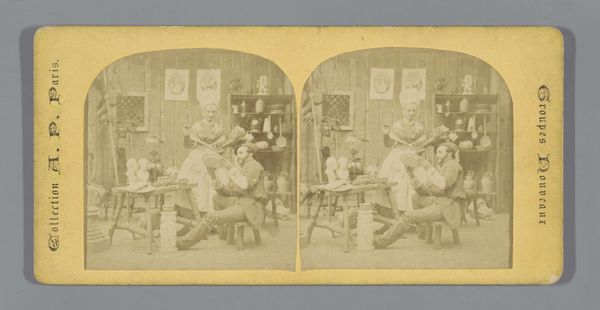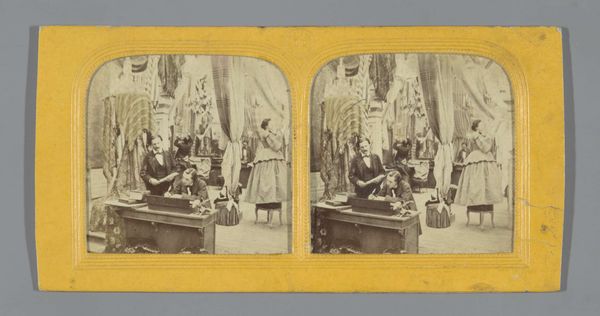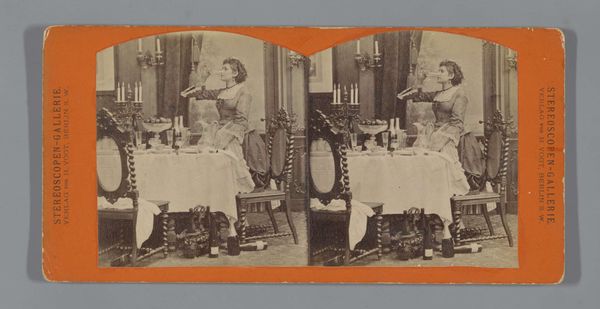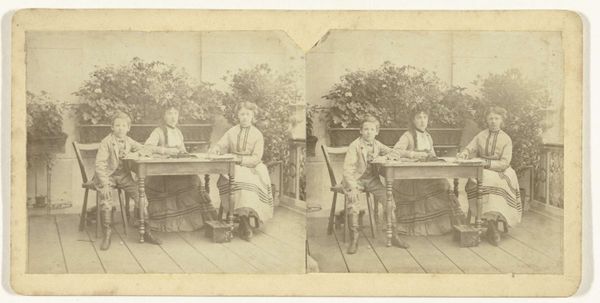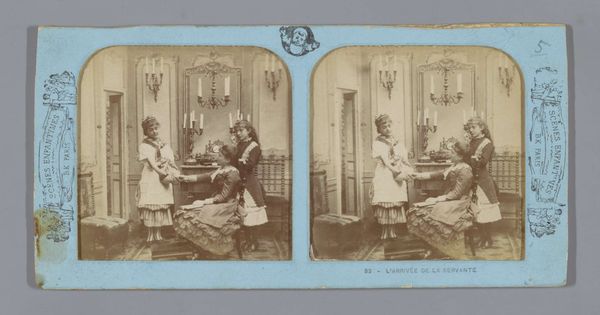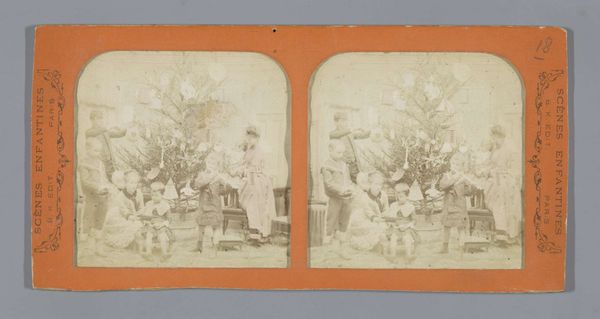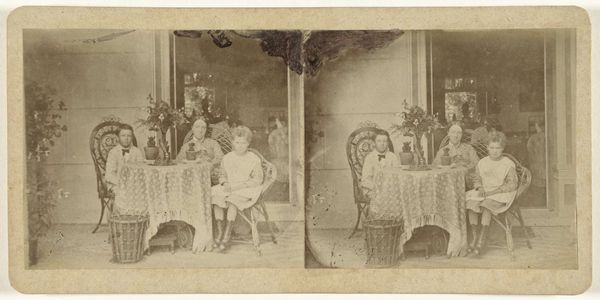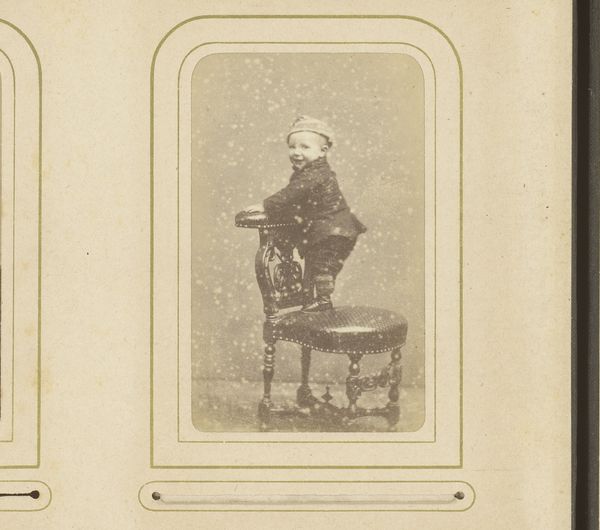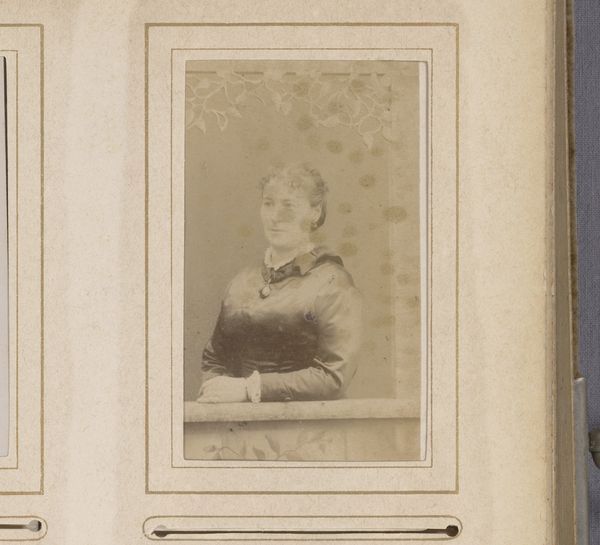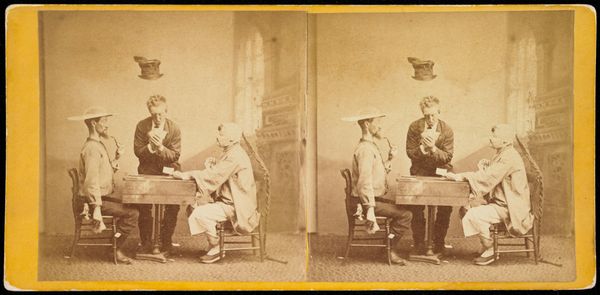
Dimensions: height 83 mm, width 175 mm
Copyright: Rijks Museum: Open Domain
Curator: This curious piece, dating from around 1857 to 1859, is titled "Man schrikt van een spook"—or, "Man startled by a ghost." It’s an anonymous daguerreotype, enhanced with color. Editor: My first impression is just how tactile it feels despite being a photograph. The subdued color palette and aged paper give it an eerie yet familiar mood—it's not a terrifying scare, more like a parlor trick. Curator: Indeed. As a daguerreotype, its creation was a complex, painstaking process involving polishing a silver-plated copper sheet and treating it with fumes to make it light-sensitive. Coloring the image further required skilled application, likely by hand, highlighting the labor embedded within early photographic practices. Editor: Right. Thinking about its social context, though, I'm struck by the ghost as a symbol of Victorian anxieties—loss, mortality, the blurring lines between science and spiritualism. Photography itself was seen by some as a means of capturing the unseen, the spirits of the dead. It plays into societal fears surrounding mortality during an era plagued by disease, grief, and spiritualism. Curator: Exactly, that interplay between scientific innovation and widespread spiritual fascination is critical here. The image operates almost as a staged tableaux, revealing how the material production of spectral imagery was carefully crafted through photographic processes. This invites us to think critically about the photograph's capacity to both record and invent, to both mirror and manipulate perceptions of reality. Editor: Considering how photography emerged, in the broader context of a rapidly industrializing society where traditional spiritual and social structures were collapsing—this "ghost" also could represent collective disruptions. Perhaps we should consider if this staged setting represents a particular type of fear—one born from change. Curator: Interesting thought! It adds layers to the understanding, situating it firmly in its socio-historical context, linking the individual 'startled man' to much broader cultural changes. This reveals a profound reflection on shifting societal values. Editor: So, instead of merely dismissing the photograph, a deeper viewing reveals complex layers about mortality, loss, technology, and cultural norms of the mid-19th century. It opens up questions, like the ongoing need for reassurance during rapid transformation. Curator: Absolutely. The materiality combined with these anxieties provides insight into historical visual culture and its interaction with belief. Editor: Yes, it provokes contemplation of how technology and spiritual unease have intertwined throughout history—something quite relevant even today.
Comments
No comments
Be the first to comment and join the conversation on the ultimate creative platform.


